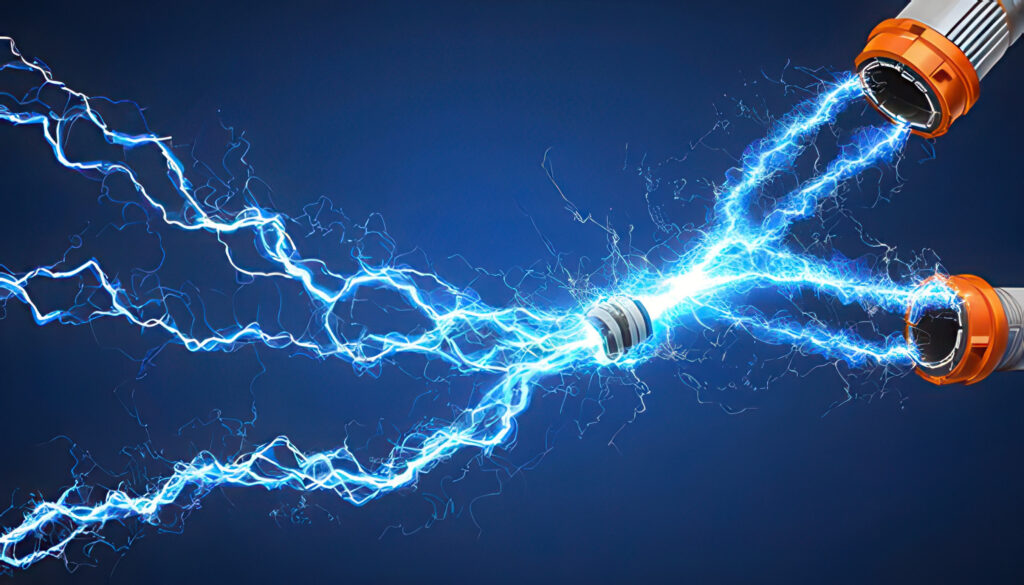
May is National Electrical Safety Month (NESM). This yearly event, started by the Electrical Safety Foundation International (ESFI), raises awareness about various electrical dangers. This year, Arizona officially joined the effort, issuing a proclamation recognizing May 2025 as National Electrical Safety Month in the state. For 2025, the campaign focuses on some emerging electrical hazards affecting Arizonans right now: lithium-ion battery safety, e-mobility devices, and electrical dangers following natural disasters.
Lerner and Rowe has seen firsthand how devastating electrical accidents can be, which is why our Arizona electrocution injury lawyers are sharing some tips on how to avoid these hazards and what to do if you are injured.
Understanding Electrical Injuries
Being aware of the types of electrical injuries is the key to prevention. With this year’s National Electrical Safety Month’s campaign focusing on new and emerging electrical threats, it’s important to know what can result from these dangers. While electrical injuries can happen in many settings, we understand that today’s rapidly changing technologies and environmental challenges create new risks of electrical injuries. The 2025 National Electrical Safety Month campaign highlights exactly that.
Some examples include:
- A lithium-ion battery in a laptop or vape pen may overheat and explode, causing facial burns, hand injuries, or fires
- An electric bicycle or e-scooter charging may ignite suddenly, leading to smoke inhalation or burns
- A homeowner attempting to restore power after a monsoon storm may unknowingly contact a live wire or flooded outlet, resulting in cardiac arrest or fatal electrocution.
While these types of injuries can certainly occur in other situations, the widespread use of rechargeable devices with lithium-ion batteries, the popularity of e-mobility, and the ever-present threat of disaster recovery in Arizona have created unique scenarios where electrical safety is often overlooked.
National Electrical Safety Month Risks of Lithium-Ion Batteries, E-Mobility, and Disaster Recovery
From the devices we rely on daily, to e-bikes and scooters, to the looming threats of Arizona monsoon season and wildfires, modern electrical risks are much more advanced than frayed wiring or loose outlets.
Lithium-ion batteries, e-mobility devices, and electrical hazards during disaster recovery can all lead to devastating injuries. Accidents and injuries involving these can quickly morph from a safety concern to a legal matter when injury is caused by defective products or negligence.
Understanding the dangers emphasized during National Electrical Safety Month requires examining how these risks appear in our daily lives, from charging devices and transportation to disaster preparedness.
Lithium-Ion Batteries
Lithium-ion batteries are present in a good portion of the electronic devices we use daily, like smartphones, laptops, electric vehicles, and power tools. In 2024 alone, they made up 80% of global battery demand, underscoring just how widespread their use has become.
When lithium-ion batteries are poorly manufactured, overcharged, physically damaged, or exposed to high heat, they can overheat, catch fire, or even explode. Fires linked to battery malfunctions can cause severe burns, property damage, and even death–especially in enclosed spaces.
To minimize risks associated with lithium-ion batteries:
- Only purchase batteries and charging devices that meet safety standards
- Avoid charging batteries overnight or leaving them unattended
- Store and charge electronic devices in cool locations, away from heat, especially during Arizona’s hot summers
- Never place lithium-ion batteries in the regular trash or recycling bins, safely recycle or dispose of old or damaged batteries through approved facilities
E-Mobility Vehicles
Across Arizona, electric bikes and scooters have become a popular solution for quick, eco-friendly transportation. E-bikes and e-scooters are both convenient and sustainable, but they also come with serious and often underestimated risks when it comes to charging and indoor storage. These lithium-ion battery-powered devices can become extremely hazardous if:
- The battery is damaged
- Charged using incompatible chargers
- Charged unsupervised or overnight
- The device is stored near flammable materials or in enclosed spaces
ESFI reports a rise in e-bike/e-scooter home fires during charging. Indoor charging of e-mobility devices. This is especially dangerous in multi-unit dwellings, and poses a significant risk of fire, injury, or death. A fire caused by one of these devices can spread quickly.
Along with the fire risk, other e-mobility vehicle hazards include exploding batteries, brake or electrical failure, or rental devices in poor condition or with faulty parts.
The risks are increased when scooters and bikes are bought from unofficial vendors or used improperly, like in extreme Arizona heat or on rough terrain. To stay safe when using e-bikes or e-scooters, users should:
- Follow manufacturer guidelines
- Avoid indoor charging
- Ensure all parts and accessories are certified, compatible, and in good condition
National Electrical Safety Month Natural Disasters and Electrical Hazards
In Arizona, natural disasters like monsoons, wildfires, and flash floods can create serious electrical hazards. Downed power lines, water-damaged wiring, and compromised systems can turn cleanup into a life-threatening situation. Many electrical injuries occur during recovery–even walking into a flooded home with live power can be fatal.
According to the Arizona Department of Forestry and Fire Management (DFFM), between January 1 and April 7, 2025, there were 291 reported wildfires that burned 5,802 acres–a 227% increase in wildfire incidents compared to the 89 fires reported during the same period in 2024.
To stay safe from electrical hazards during natural disasters:
- Shut off power at the main breaker before re-entering damaged areas
- Never touch wet or submerged outlets or devices
- Only use generators outdoors, away from windows and vents
- Have your system inspected by a licensed electrician
- Avoid all downed power lines–assume they are live
- Never attempt DIY electrical repairs after a disaster
National Electrical Safety Month: Stay Safe, Know Your Rights
This National Electrical Safety Month, Arizonans need to know about the rising dangers of lithium-ion batteries, e-mobility, and electrical issues after natural disasters. Electrical injuries from faulty batteries, neglected properties, or poor disaster recovery aren’t accidents; they could be the basis of a personal injury lawsuit.
Lerner and Rowe’s Arizona personal injury lawyers are dedicated to ensuring individuals understand their rights and receive deserved compensation for injuries caused by negligence or recklessness. National Electrical Safety Month is a reminder to stay safe and informed, and to remember that legal help is available.
If you or a loved one has suffered an electrical injury due to negligence or unsafe preventable conditions, don’t face the aftermath alone. The Arizona injury lawyers at Lerner and Rowe are available 24/7 to provide the legal support you need.
We offer free consultations and operate on a contingency fee basis–you don’t pay unless we win your case. Call us at 602-977-1900. You can also connect with us via LiveChat, or fill out an online case review form today.



